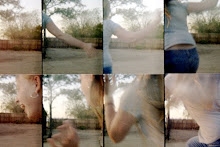What on earth is St. Elmo's Fire?
The scientists write about it all weird and complicated, but basically what happens is during an electrical storm at sea, a sort of plasma lamp type of thing occurs at the ends of the masts on ships. It was regarded by sailors with awe and was so named for the patron saint of sailors--Saint Erasmus of Formiae (St. Elmo was a mispronounciation of St. Ermo). The "fire" is usually bright blue or violet due to the ionization of air molecules, and appears on tall, sharply-pointed structures such as aircraft wings, chimneys, lightning rods, spires, and of course, ship masts.
St. Elmo's Fire is often confused with ball lightning, which is a separate meteorological phenomenon. Ball lightning is an atmospheric electrical phenomenon identified as glowing, spherical objects varying greatly in size, resembling lighting but lasting quite a bit longer than a lightning bolt. The scientific data on this phenomenon is scarce because of how infrequent and unpredictable it is, making its existence still somewhat debated and controversial. Accounts of ball lightning vary widely, by the direction it moves, what it is attracted (or unattracted) to, how it behaves, how it looks, etc. There are also many hypotheses attempting to explain how it comes to be, from electrical charges in natural magnetic fields, to silicon struck by lightning vapourizing and glowing in the air as it oxidizes, to the passage of black holes through Earth's atmosphere--but nothing is concrete.
What about the "foolish fire" known as the Will-o'-the-wisp? Folklore accredits the phenomenon to any number of fairies, ghosts, spirits, or even animals, who carry or direct the light for reasons good or bad. The Irish tale is that of a condemned man named Jack who carries around an ember from the fires of hell to light his way through the spirit world. The British believe the light is in the hands of a rogue fairy who leads travelers off the beaten path to be lost forever. In other European tales the light is said to be a lost soul of the dead who are either mischievous or malevolent in nature and intend to lead followers to their death. In the US, the ghost light of the will-o'-the-wisp is mainly attributed to railroad workers killed in work accidents or lost miners whose ghosts now carry lanterns as they wander. Other cultures believed the light to mark the location of a hidden treasure. But as it turns out, it's often nothing more than the oxidation of a couple different chemical compounds igniting on contact with oxygen, causing glowing lights. Or is it?
Other ghost lights include the Min Min Light of eastern Australia, the Naga fireballs in Thailand, the Hessdalen lights of Norway, the Paulding light in Michigan, and the Marfa lights in Texas just to name a few. All are similarly described, yet unexplained, light phenomena that occur enough to be reported, denied, speculated, investigated, and debated.

No comments:
Post a Comment